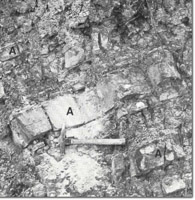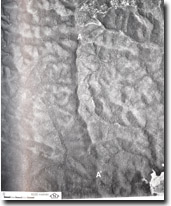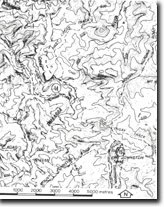8523-15 Mt Johnstone Area
|
This information has been developed from the publications:
|
Location: | 962513. 7 kilometres north-west of Buchan. |  Mount Johnston. Interbedded sediments and Snowy River Volcanics (A). |
Abstract: | Pronounced strike ridge in Mt Johnston Member of the Timbarra Formation. | |
Access: | Mt Johnston Track. | |
Ownership: | Crown land. | |
Geology: | The Mt Johnston Member of the Timbarra Formation consists of rhyodacite, ignimbrite and siltstone which overly the conglomerates of the Formation. The member is well exposed in road cuttings along the Mt Johnston Track and on the mountain. Two major flows of ignimbrite, 3 m and 15 m thick, are interbedded with a finely bedded siltstone and more massive volcanic material. These beds gently dip to the east at approximately 40 degrees although minor folding is apparent in the siltstone beds, particularly in Davidsons Lane. The siltstones have yielded a solitary plant fossil identified as a conifer percursor. Ignimbrites are uncommon in the Snowy River Volcanics. Those at Mt Johnstone are hard, black and fine grained and contain fragmental phenocrysts of igneous particles in a groundmass of glass and felspathic crystals. Flow banding and some flattening of crystals is evident but welding of particles is rare. | |
Geomorphology: | The resistance of ignimbrites to erosion has resulted in the development of a prominent strike ridge which extends for several kilometres north and south of Mt Johnston. | |
Significance: | Regional. Pronounced strike ridge development with the best exposures of ignimbrites of the Mt Johnston Member (Timbarra Formation) of the Snowy River Volcanics. | |
Management: | The value of the site would be enhanced by the maintenance of clear faces on the Mt Johnston Track cuttings. | |
References: | Fletcher, K. 1963. 'The Snowy River Volcanics west of Buchan, Victoria', Proc. R. Soc. Vict. 76 :169-179. | |
 Mount Johnston. Strike ridge (A-A') in Snowy River Volcanics (Ignimbrites). |



